VIVA MEXICO! AND A NEW WEBSITE
Ta Dah!
Drum roll, please: the big news at Sydney Lynch Jewelry is my brand new website! It's been months in process and has finally launched.
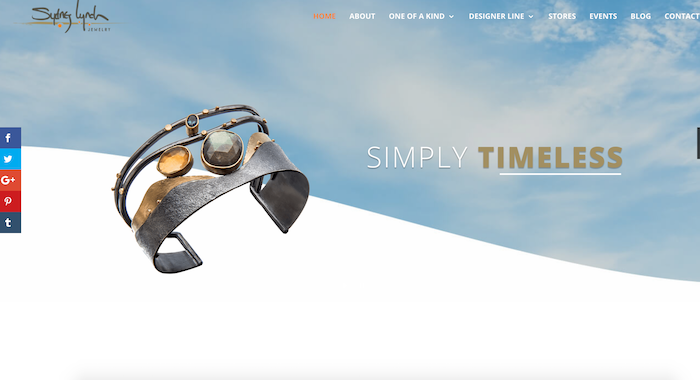
Instead of posting new jewelry photos this month, I invite you to click and take a self-guided tour:
sydneylynch.com
I hope you'll like it, and if you run into any issues, please let me know in case we missed something.
Viva Mexico!

There was this: Mexico City on Saturday evening, as we joined the frantic press of a city of 25 million people. And this (below): tranquil street life of the indigenous pueblo of Santa Fe de la Laguna. For nearly two weeks we inhaled, ingested, and immersed ourselves in the rich contrasts of Mexico. From Lucha Libre to Semana Santa, corn on the cob eaten on the street corner to carrot cake mille feuille with tarragon ice cream, archaeological ruins to Carlos Slim's Museo Soumaya-- talk about an abundance of riches! I'll try to share with you a few bites from this all-five-senses buffet of culture and life.
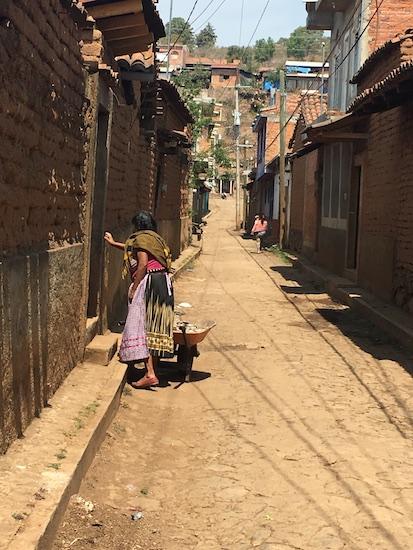
Comida
Spanish for both "food" and for the main meal of the day, sort of a late lunch.
Street food is plentiful and delicious.

Top: roadside, open air comida buffet near Lake Pátzcuaro.
Right: mangos were in season, the best I've ever eaten, with fresh lime juice squeezed over the fruit.
|
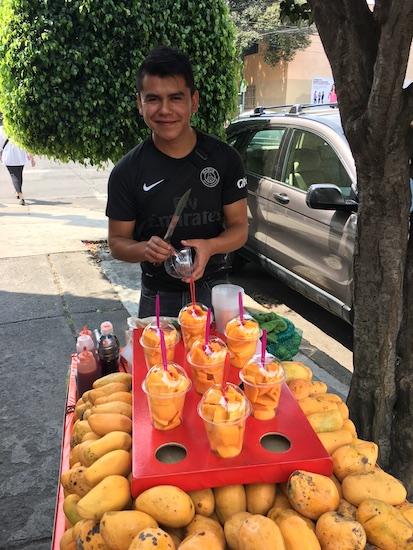 |
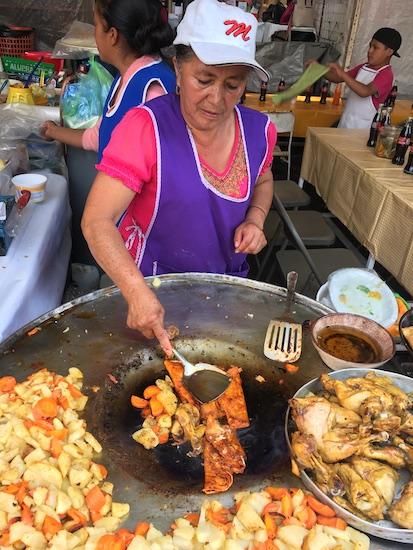
During Semana Santa, there was an entire block of open air cooks along the plaza in Pátzcuaro. Roasted potatoes and carrots with chicken or chicken enchiladas.
|

I
flagged down a woman on the street near the Zocalo in Mexico City to ask what she was eating. Tlayudas, from Oaxaca, are a crisp tortilla base with frijoles, nopales, tomato, onion and cilantro. For about $1.15, you can eat in the plaza while Mexico City swirls around you.
|
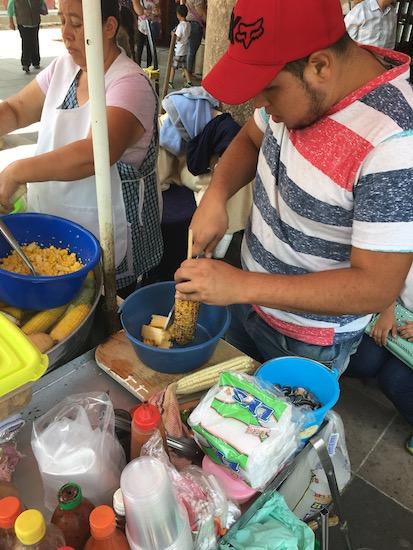
Possibly my favorite: grilled corn, sliced off the cob and seasoned with salt, lime juice, and your choice of chili powder, salsa or deep, dark chili in oil.
|
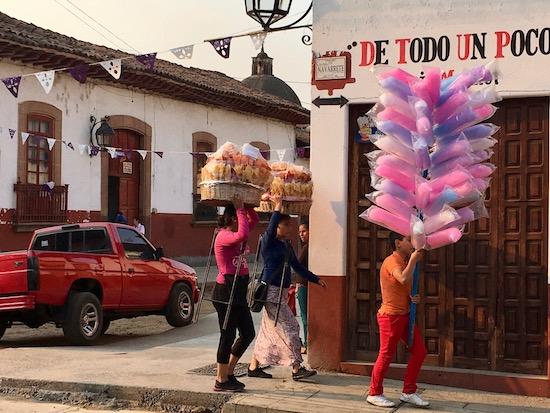
Even during the most solemn Easter processions of Semana Santa, street vendors are out with colorful snacks, some more appealing to photograph than to eat.
|
Color!
Crazy, brilliant color is everywhere in Mexico. Maybe it's inspired by bouganvillea, papaya and mango. Maybe richness of color is a way for even the poorest Mexicans to celebrate life by using bright plastic dishes and embroidering their clothing in fuchsia,
turquoise and canary yellow
. Wherever I've been in Mexico, it's alive with Crayola hues
that seem to reflect a generally optimistic people.
 |
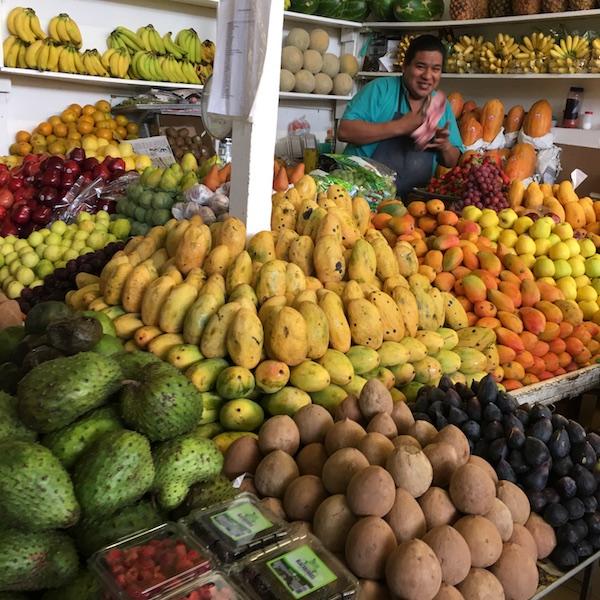
Above: fruit vendor at the Coyoacan market.
Left: traditional candy shop in Mexico City.
|
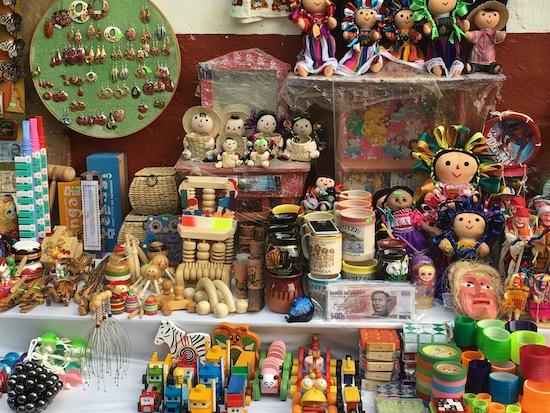
Typical sidewalk trinket stand in Pátzcuaro.
|
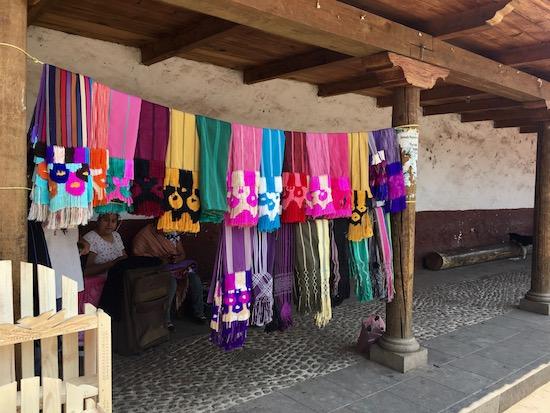
Handmade rebozos in Santa Fe de la Laguna, near Pátzcuaro.
|

Seamstress shop in Santa Fe de la Laguna. Indigenous women use glitzy fabric in their traditional skirts, styled with hundreds of knife-edge pleats.
|

Inside a modern supermarket, plasticware looks like Lego Land.
|
Mexico City

CDMX is huge. It has a long, complex, rich history. Modern and ancient share the same space. There are drastic social class divisions, and yet a sharing of customs and traditions. So here are a few random notes, a tiny percentage of 6 days' worth of our experience there.
Lucha Libre!
Why not? A circus-like version of wrestling, famous for the fighters' masks and antics; on Sundays Lucha Libre is for families. A far cry from the pre-Colombian ball courts where each game was a fight to the death!

See that tall gringo fighter on the far right standing next to the little guy with pink hair known as Maximo Sexy? We happened to meet him our final night in Mexico at our B&B where he was waiting to give a presentation to a group of businessmen from Oregon.

Mark Jindrak from upstate NY, aka "Marco Corleone," a luchador who has wrestled in Mexico for 11 years and also is a telenovela star. A very sweet, humble, 6'6" guy.
Frida's Casa Azul

Frida Kahlo's Casa Azul draws throngs from around the world, and we too, made the pilgrimage to Coyoacan, a leafy, quiet suburb. Seeing Frida's house and studio as she left it and works of hers that I was unfamiliar with, was quite moving and inspiring.
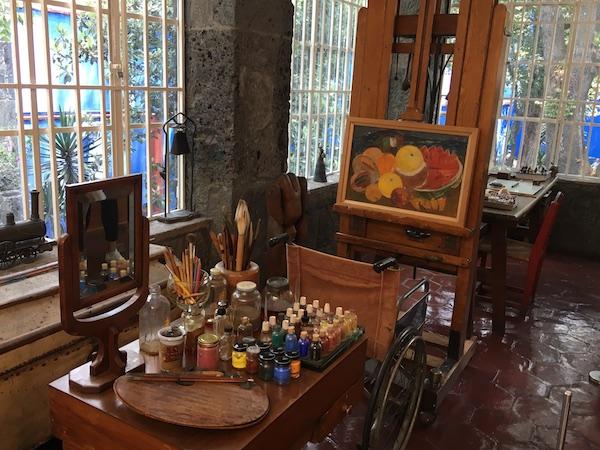
Frida's studio with the mirror she used for painting self portraits.

Iconic photo portrait.
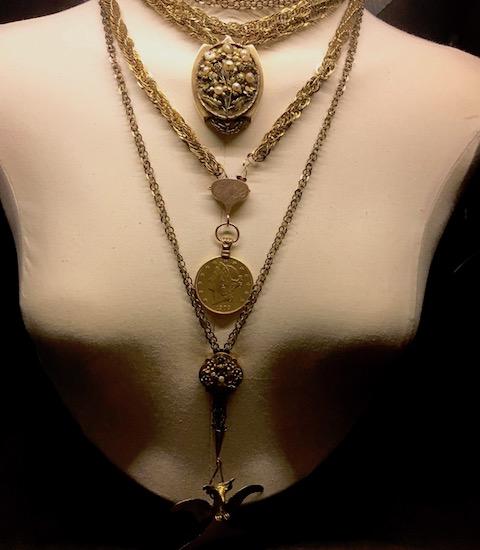 |
Frida was into layering her necklaces long before it became a trend.
|
 |
Pre-Colombian
Between the pyramids at Teotihuacán, the more recent downtown excavation of Templo Mayor, and the superlative Museo de Antropología, we hit a few of the major sites and repositories of Meso-American art and artifacts. It's a vast and complex history of indigenous cultures that produced unique and stunning ceramics, stonework and a bit of jewelry.
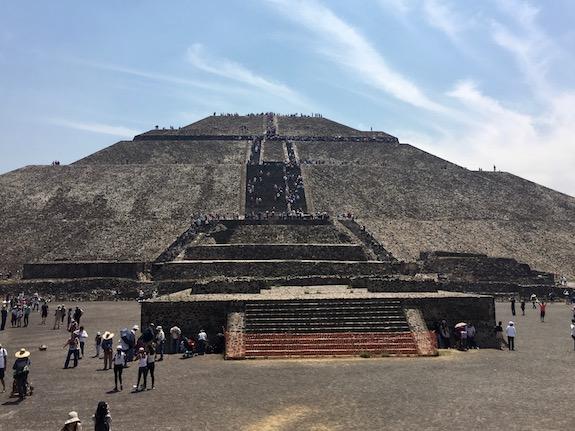
Some serious legwork was required to climb both the Pyramid of the Sun (above) and Pyramid of the Moon at Teotihuacán.
Pátzcuaro
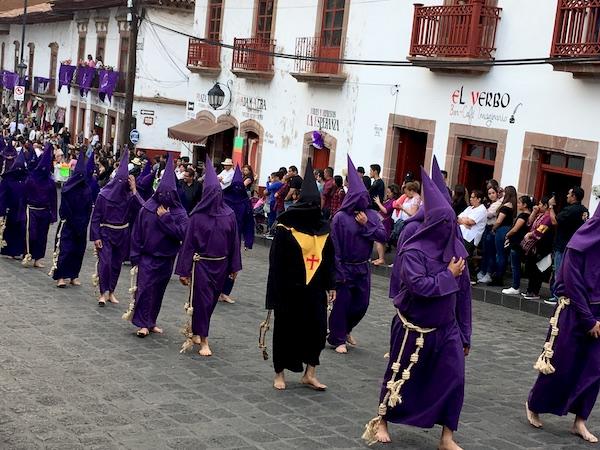
The Silent Procession, an act of penance, is composed of members of the Brotherhood of the Third Order of St. Francis, a multi-generational organization.
The costumes originated in Spain, and yes- allegedly influenced, in appearance only, the you-know-who's costumes.
 Above: In training. Above: In training.
Right: crucifix of intricately woven palm fronds. |
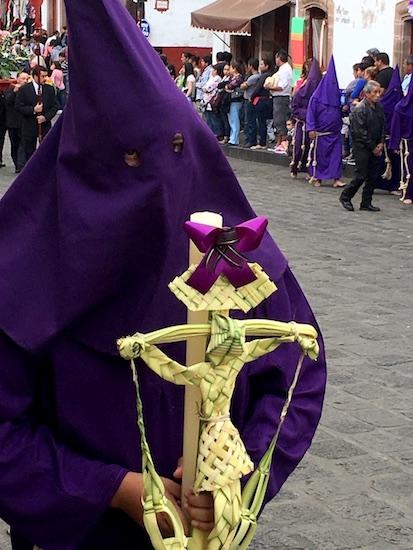 |
Sunset after the Good Friday procession.
Santa Clara del Cobre
In the Lake Pátzcuaro region are villages known for a specific crafts.
The concept began with Bishop Vasco de Quiroga around 1540, who was influenced by Thomas More's "Utopia," and established villages that would practice these trades. In pre-conquest times, the indigenous Purépechas had a coppersmithing tradition, which was then encouraged by Quiroga.
You can visit a few studios, though they seem to be used primarily for roughing out the vessels as tourist demonstrations, with the fine finishing work done in private studios.
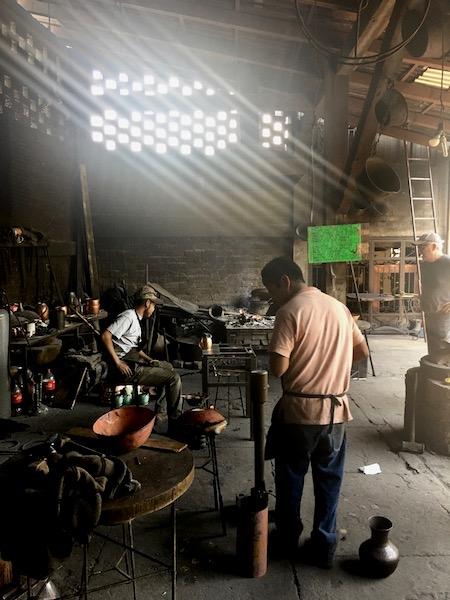
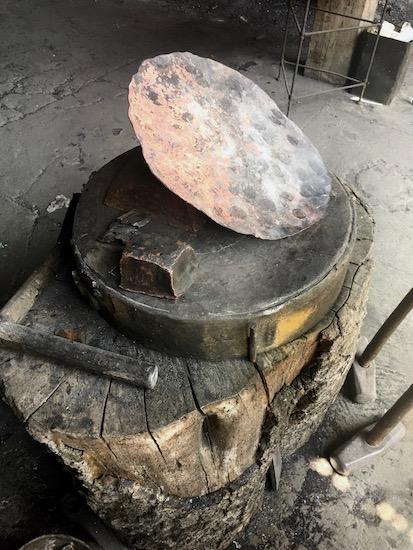
These days only scrap copper is used. It's melted and formed into ingots like that square chunk you can see in the photo. From there it is pounded- a lot!-to make a rough disc. That's just the beginning before the disc is hammered around a succession of iron stakes to form the shape. For very large pots, several men will work together to shape a piece, wielding huge hammers.
 Shaping the vessel, which will eventually look like the one on the right. Shaping the vessel, which will eventually look like the one on the right. |
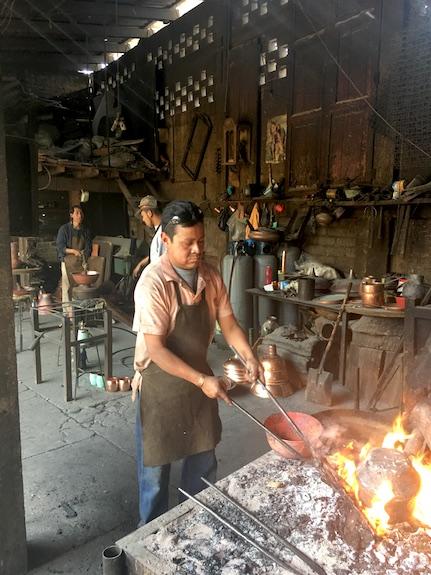
Annealing the vessels in a wood fire to soften the metal between rounds of forging. |
 |
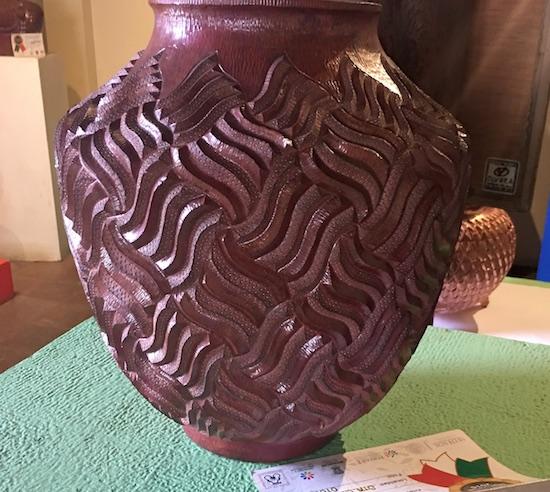
In the museum, two award-winning vessels, about 16" tall. |

An enormous cooking pot for a town's worth of frijoles in Santa Fe de la Laguna.
|

On the street in Santa Clara. Mechanic shop with vegetables.
A moment of Zen: perros!
Dogs are part of Mexican life. Even before European contact they were part of
human society, albeit sometimes as a source of protein.
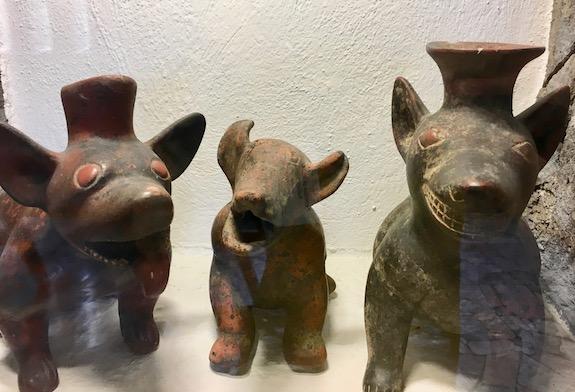
From Diego Rivera's collection of pre-Colombian artifacts.
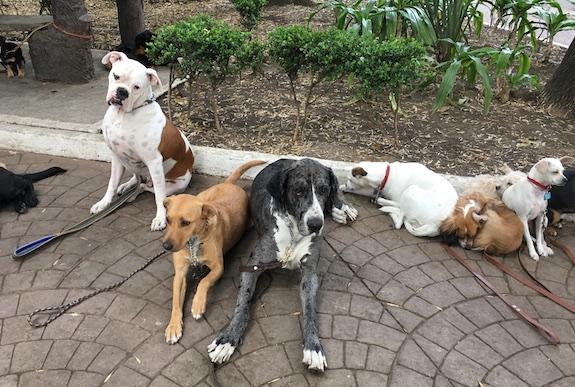
Dog-training class in the affluent La Condesa neighborhood.
|
|
|
|
|